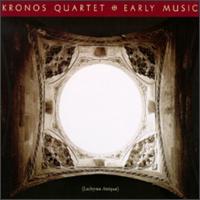"Kaji to kenka wa Edo no hana da"
(Fights and Fires are the Flowers of Edo)

"Sonae areba ureinashi is the Japanese proverb for an ounce of prevention is better than a pound of remedy. During the Edo period several precautions to prevent fires from breaking out and from spreading were introduced and became mandatory laws. Fire brigades were established for each district and watch towers were built. Shop keepers had to keep huge buckets filled with water. The city was separated into blocks of houses surrounded by high wooden walls and gates that were closed at night and guarded by a gate-keeper. New roads were constructed as wide boulevards to prevent fires from spreading from one side of the street to the other ...
A document from 1738 mentions a total number of more than 11,000 fire fighters - in relation to a total population of about one million citizens. In 1850 24,000 hikeshi - as they were called in Japanese - were employed to protect the city of Edo. The main task of the firemen was to isolate a fire by tearing down the neighboring houses.
Among the population of Edo the firemen had a very special reputation, depending to which class a person belonged. On one side they were admired for their bravery. On the other side they were considered as wild red necks, rowdies and drunks. Firemen had a strong group mentality, expressed in manifold ways. One was horimono, Japanese tattoos. It was a way to demonstrate masculinity and solidarity with one's comrades. Body tattoos were widely common among the men of the fire brigades. The hikeshi came from the lower classes and were looked upon by the members of the samurai class and the merchant class. This created peer pressure and the cultivation of rough manners, coarse language and status symbols like the body tattoos."
-- http://www.artelino.com
"The fires were so destructive, and so disruptive of established hierarchies and bureaucratic procedures, that they were known as "the flowers of Edo." They were combustible in two senses. These 'flowers' bloomed not only in hear and light, but in large brawls as well, because neighboring gnags of firefighters often clashed over jurisdiction, resources, and post-conflageration disputes about responsibility -- hence the saying "Kaji to kenka wa Edo no hana da" .. and the corresponding association of intermittent disaster and lawlessness."
-- Ozu's Tokyo Story
read the tale of Edo's famous arsonist, Yaoya Oshichi >>

明暦の大火 : Meireki no taika "The Great Fire of Meireki"
The great fire "destroyed 60-70% of the Japanese capital city of Edo (now Tokyo) on March 2, 1657[1], this is the third year of the Meireki Imperial era. It lasted for three days, and is estimated to have claimed over 100,000 lives ...
The fire was said to have been started by a Japanese priest who was cremating an alleged unlucky kimono. The kimono had been owned in succession by three teenage girls who all died before ever being able to wear it."
-- Wikipedia : Great Fire of Meireki













wow thats a big fire.many live slost. so many familes broken. all because of the isolation. stuiped shogun
ReplyDelete